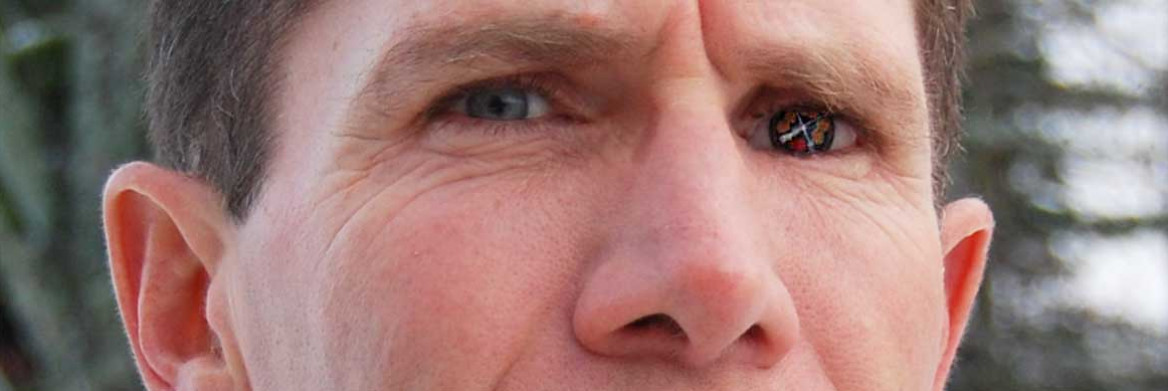The nine-millimetre bullet that blew out RCMP Cpl. Tim Belliveau's left eye hangs from his neck on a gold chain. He uses the flattened piece of metal as a conversation starter about the day that changed his life and how talking about it has helped him to heal.
"It's a weird time. You're normal, and then your life gets flipped upside down," says Belliveau, an instructor with the RCMP's Tactical Training Section in Fredericton, N.B. He spent most of his nearly 38 years with the RCMP on the Emergency Response Team (ERT).
Belliveau had been with the training section for five years when, in January 2012, an accident changed his life. During a training session at an indoor firing range, a student officer's bullet ricocheted off a light cage and hit Belliveau in the left cheekbone. He says it felt like a punch in the face.
He lost his left eye. After the accident, Belliveau struggled with depth of vision and loss of focus in his right eye. Bumping into things left his hands bruised and battered. He laughs about it now but, at the time, he was frustrated and angry.
"I felt like it was never going to get better, so it was easy to get on that pity pot," says Belliveau, who met with a psychologist for eight months. He says it helped him understand his reaction to the situation was normal, and learned ways to handle it better.
Nearly five months after the accident, Belliveau was back at work with limited duties. His emotions still raw, he agreed to be an instructor for the mental health awareness course Road to Mental Readiness, thinking others might identify with his story. In the end, it was also good for him.
"I would relate how certain aspects of the course helped me and, as I was teaching, I would be going through it again," says Belliveau.
Initially self-conscious about his appearance, Belliveau says he kept his head down and avoided eye contact. But people wanted to hear his story. Belliveau says he couldn't talk about it without crying at first and he was embarrassed by his emotions, which were uncharacteristic of him.
But the more he talked and saw that he didn't make people uncomfortable, the more his confidence returned. Today, he wears a prosthetic eye. In place of a pupil, Belliveau's eye displays a hand-painted ERT crest.
"For a while, I used a prosthetic that matched my other eye but it was distracting for people. They would look from one eye to the other — you could tell they were trying to figure out what was going on there," he says. "This one makes it obvious. They see it and go 'Oh, OK, he's got a fake eye' and then they move on mentally."
Belliveau continues to work in the Tactical Training Section but he hasn't worked on the front line nor carried a weapon outside of a training facility since the accident.
Even with less peripheral vision on the left, Belliveau is now used to having just one eye. He says most days he doesn't even remember what life was like with two.
"You learn to deal with what you have and the reality you're in," says Belliveau. "Once you accept that, you move on and enjoy life."
